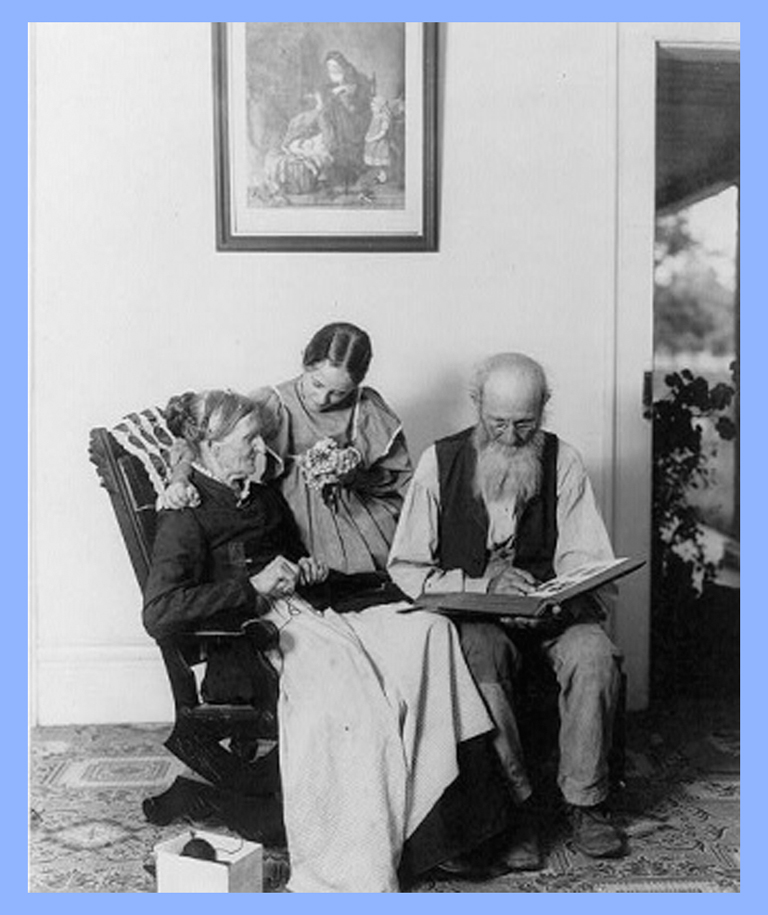One by one, the sewing supplies my grandmother once used disappeared or became of such inferior quality that she wouldn’t use them. She had once been the seamstress of our little Southern town, and no cost-cutting measure escaped her sharp eye. She always complained that no one had “dainty” lace any more. Or soft enough cotton fabric. Then she couldn’t find eyelash cotton. Then all the dotted Swiss “got funny”. She was very particular. “I wouldn’t waste my time sewing that up,” she’d often say. And one of her prime targets – after the quality of the fabric – was buttons.
My grandmother’s button box was filled with tiny pearl buttons, exquisitely small with minute holes that only the slimmest of needles could penetrate. When she and my mother and I would go on one of our marathon fabric shopping trips, she always went prepared.There would be her little sack of fabric swatches, sketches of what she wanted to make, all sorts of measurements and yardage notes. And her glasses were freshly washed. (“They’re not going to put anything past me!”) From the moment we hit the parking lot, she got that steely determined look that told us she was ready for the hunt.

One of grandmother’s tiny pearl buttons on a baby dress she made in the 1920s.
©Jill Teresa Farmer
Her first target was always the notions counter. (She was always running out of those short, thin needles, her favorite tool.) She would “tsk, tsk, tsk” her way up and down the rows, and when she got to the buttons she would suddenly lean forward, squint, and adjust her glasses. “Awful, just awful,” she would proclaim. None met her standards. (Neither did ribbons, but that’s another story.)
“You have to buy buttons when you find them,” she instructed my mother and me. “You can’t wait. If you find a nice button in a basic color – buy enough to do a blouse that buttons up the front and add two for each sleeve. That’s the only way you can be sure you’ll have enough.” We filed this gem away. My grandmother’s proclamations about sewing were always right.
We rarely had “store-bought” clothes, but when something impressed one of us it inevitably had to be altered. Something was always wrong. Being short, with me it was usually adjusting the hem. A dress for my mother had to have the waist taken in. My grandmother was tall and thin, so she could usually wear anything as is, except for one thing – you guessed it, the buttons. I recall our finding a dress for my teenage self that was a real find. But of course the buttons weren’t good enough. On the way home we took the dress into a fabric store to find some of a better quality. Then we were so excited that we sat up and replaced every fastener on the dress. After that, my mother took it to her sewing machine and reinforced the sleeve seams. It didn’t seem so store-bought after all the extra time we put into it.

©Jill Teresa Farmer
Mother’s favorite designer was Coco Chanel, and she copied many of her beautiful suits. For these she bought gold dome buttons and white plastic rings. She would carefully cover the ring with coordinating fabric from the suit, nestle the gold dome inside, and sew it in firmly. Voila – Chanel-style buttons! My big love was covered buttons. To me they were the epitome of style. But the day came when they changed up the whole system and I could no longer get it right. I was blue for a week.
One day, after my grandmother had made her way to Heaven, my mother came to me with a beautiful linen suit she had made. “I made it, but now I can’t find any buttons to match. All of them are just so tacky.” I sympathized. She had some choices, but the elegant outfit lost some of its beauty with what she had on hand, and we knew there was nothing better at the store. The fabric had been an impulse buy because of its quality and beautiful, subtle color. But we had nothing in any of the button boxes to work with. But with an inventor for a father, I knew there was an answer to this. It took me a while. And then I hit on the answer – crocheted buttons! At first my mother was horrified. Crocheted buttons on a chic suit? But what I had in mind was a little more sophisticated than that. I got some of her scraps and unraveled the threads. Then I added one fine strand of gold thread. And with them I crocheted matching round buttons. She loved them.

Button crocheted from unraveled threads with a strand of gold embroidery thread. I pulled the thread that holds it all together to one side so you could see its heaviness. ©Jill Teresa Farmer 2015
Looking through four generations of button boxes is a sweet trip down memory lane for me. My grandmother’s tiny pearl buttons, too rare now for me to bear using; the gold buttons in all sizes and designs; the cute little daisies with the yellow centers that we were sure we’d never use but were just too cute to pass up; the ones we cut off the men’s shirts before they became dust rags; the feminine pale blue buttons with the tiny rhinestones from a decades-old lingerie set….
Those were happy days, with my grandmother sitting on the window sill so she would have plenty of light to make her tiny hand stitches; my mother bending over the old Singer with her toolkit and oil can, overhauling the entire contraption; and me, wondering if I would ever grow up to be as talented as they were. I didn’t, but I have beautiful memories of the women in my family doing what they loved.
Copyright ©2015 Jill Teresa Farmer. All rights reserved.







